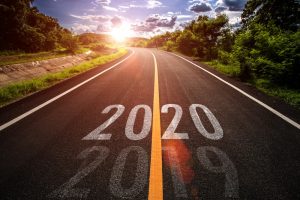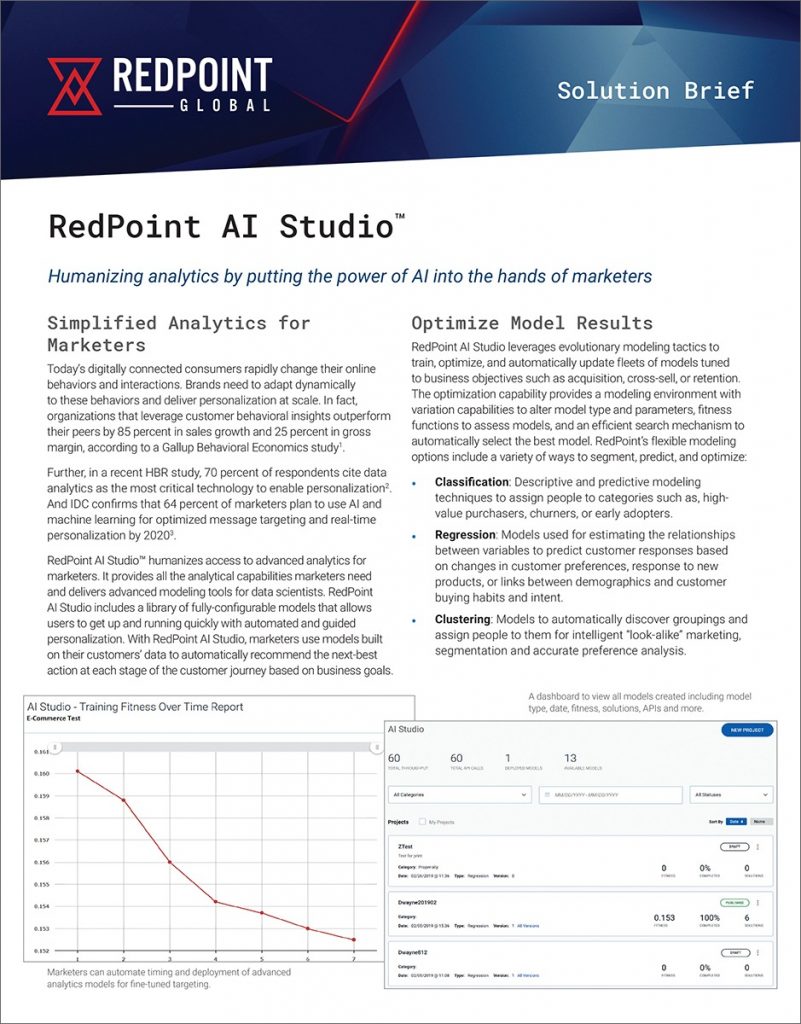 The customer experience gap measures the difference between how marketers and consumers rate marketers’ ability to provide a personalized customer experience. According to a Harris Poll survey commissioned by Redpoint earlier this year, marketers generally rate themselves 2.5 times higher than consumers on their ability to provide an excellent customer experience.
The customer experience gap measures the difference between how marketers and consumers rate marketers’ ability to provide a personalized customer experience. According to a Harris Poll survey commissioned by Redpoint earlier this year, marketers generally rate themselves 2.5 times higher than consumers on their ability to provide an excellent customer experience.
Marketers aim to close the gap, recognizing that a personalized customer experience is an imperative and that there is no time to dither. According to the Harris Poll, 37 percent of consumers will stop doing business with a brand that fails to offer a personalized experience. Whether marketers make headway on closing the gap has a lot to do with the consumer – if expectations for a deeper, more relevant personalized experience continue to increase, marketers will have to adapt with the moving goalposts before they can spike the ball.
With the clock about to start on 2020, I anticipate that narrowing the customer experience gap will be top of mind for marketers for the new year and beyond. Because a hyper-relevant, personalized customer journey drives revenue, we will see a heightened sense of urgency from marketing organizations to modernize customer engagement technology to deliver on deepening customer expectations for personalization. With personalization as the underlying, driving force as we get set to close out the “teens”, here are additional predictions for 2020 and beyond:
Moving Beyond Compliance: An Equilibrium Between Data Privacy & Personalization
Marketers must strike the right balance between delivering a personalized experience while still respecting data privacy regulations and honoring customer preferences for how their personally identifiable information (PII) is stored, shared, and used. As data privacy legislation including GDPR and CCPA either mature or go into effect, we see 2020 as a tipping point between the balancing of personalization and privacy.
Marketers will find the equilibrium between these seemingly conflicting objectives, finally resolving the typical pendulum shifts. One reason for this is because consumers are clear that they will accept the trade-off of providing personal date in exchange for a more personalized experience. In the Harris Poll survey, 54 percent of consumers said they would make this trade, with the percentage skyrocketing for younger consumers (72 percent of Gen Z, and 70 percent of millennials).
The trend of consumers being willing to exchange data for personalization provides a strong incentive for marketers to safeguard consumer data beyond mere compliance and prove to consumers that opting in and sharing personal data will result in a differentiated experience. The value exchange benefits consumers with a more personalized experience, less friction, added convenience, and special offers that are available only to them.
The Marketing Role Will Continue to Evolve
As data unlocks personalization and grows revenue streams, 2020 will see the marketing role continue to evolve. The marketer will increasingly serve as the key cog in marshaling customer data to create innovative customer experiences. There will be a consensus that marketing is a mission-critical business function, with a growing expectation that it will lead the enterprise in driving revenue.
In pursuit of this goal, collaboration between marketers and data scientists will continue to deepen, forming a cohesive team that is empowered to innovate customer journeys. The role of the “citizen data scientist” will also be key – marketers who increasingly have the skills to implement advanced analytic models, empowering them to easily test, tune and optimize customer experiences As organizations strive for a comprehensive, single customer view, marketers will more broadly embrace their role as being chiefly responsible for creating and using the single customer view to deliver individualized next-best actions and to orchestrate engagement across all touchpoints.
The trend has long been percolating, as companies have high expectations of their CMO’s taking advantage of new technology to drive growth. This added pressure and complexity has led to volatility in CMO position, with both an opportunity to thrive (e.g. CMO’s are increasingly becoming board members), and an opportunity to be replaced (CMO’s have the shortest tenure of any C-level executive). A detailed Accenture report from 2018 posits that a shift from brand to customer experience has changed the CMO remit, with the CMO evolving into a chief collaborator steering the organization toward delivering “world-class customer experiences”. This top-down mandate marks a shift in strategy in response to customer experience overtaking price and product. Interestingly, a much-referenced research report from Frost & Sullivan from 2016 actually pegs 2020 as the year that customer experience overtakes price and product as a key brand differentiator.
Advertisements Will Decline in Influence, Putting a Spotlight on Innovation
With customer experience becoming paramount, it stands to follow that the influence of impersonal digital advertising will wane. Consumers will no longer tolerate an influx of irrelevant, intrusive digital ads, preferring instead ads tailored to their interests, preferences, and recent behaviors as a consumer engaged with a brand through a multitude of channels.
In response, marketers must focus on innovating the customer experience for both anonymous and known customers, such as delivering personalization for the first-time visitor to a website. Relevant messages must be consistently delivered in the context and cadence of individual consumers, across the entire customer journey.
This type of innovation requires real-time access to deep customer data, automated machine learning, and an open garden approach to connect all the different last-mile touchpoints to consumers. While an open garden approach is key to innovation, it needs to be done in a way with a strong security perimeter around the enterprise’s data assets to ensure privacy compliance.
Say Goodbye to the Hype Cycle
Finally, we see 2020 squashing the notion that AI and machine learning are merely fashionable trends with a short shelf life. The flashy ad-hoc use cases such as facial recognition, chatbots, and robots will yield to a consensus that automated machine learning has the power to fully transform an enterprise by positively impacting revenue.
In 2020 and beyond, successful organizations will no longer rely on AI and machine learning for one-time, one-dimensional projects. Instead, it will always be running behind the scenes – with several in-line analytics models embedded and driving real-time decisioning for personalized engagement with consumers. To power these models, marketing organizations will place a far greater emphasis on having more quality data.
With all of the above on their to-do lists, another easy prediction is that marketers will have their hands full in 2020 with delivering on the promise of a personalized customer experience and narrowing the gap between what customers expect and what marketers are able to deliver. It might be too soon for another “Roaring ‘20s” nickname for the decade, but we can guarantee that marketers will be busy.
RELATED CONTENT
The Future of Customer Experience: 2019 Predictions
9 Predictions for Marketing Technology in 2018
Survey Says: Personalization is on Shoppers’ Holiday Wish List

